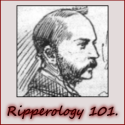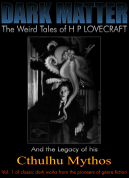 Remember, Remember the 5th of November
Remember, Remember the 5th of November
In the early hours of the 5th of November 1605 Guy Fawkes, who’d been using the names Guido Fawkes and John Johnson, was discovered in the cellars beneath the Palace of Westminster (specifically under Parliament House – only one part of a much larger complex of buildings) equipped with a handful of slow matches, a pocket watch and 36 barrels of gunpowder hidden under a pile of wood and iron bars. His aim was to blow-up the Palace and kill King James I (along with a significant portion of the ruling elite) at the ceremonial opening of Parliament that was to take place later that day. Fawkes – and his fellow conspirators – somewhat naively thought that the resulting explosion would have resulted in the kind of chaos and anarchy that would allow them to establish an English Catholic monarchy in place of the existing Protestant Union of England and Scotland under a Scottish monarch who (as they saw it) had no right to the English throne.
So… how did this turn-of-the 17th century English religious fanatic, wannabe-assassin and potential mass-murderer become the 21st Century’s face of world-wide protest, anarchy and anonymity? There are numerous reasons – but principle among them are an annual national bonfire night used for the burning of effigies of hated figures, a 19th century historical romance, a late 20th century cult comic book, a 21st century super-hero movie and a loose collective of online hacktivists, anonymous anarchists and protest movements. But more about them shortly, first…

Guy Fawkes – Contemporary Engraving by Crispijn van de Passe
Who was this Guy (Guido… or John)?
Guy Fawkes was christened into the Church of England at the church of St Michael le Belfrey in York (England) during the reign of Elizabeth I on the 16th of April, 1570 – he was probably born on the 13th for the custom was to wait three days before christening a child. His parents, Edward (proctor of the ecclesiastical courts and advocate of the consistory court of the Archbishop of York) and Edith Fawkes, were both practicing Anglican protestants (the official religion of England) though his mother’s family (descended from the Harrington family who were eminent merchants and Aldermen of York) were recusant Catholics refusing to conform to the official religion (and therefore subject to varying penalties and fines). He had two younger sisters, Anne (b. 1572), and Elizabeth (b. 1575). Guy Fawkes attended St Peter’s School (a governor of this school had spent twenty years in prison for recusancy and its headmaster, John Pulleyn, was from a family of noted recusants) and two of his fellow students, brothers John and Christopher Wright, would later be involved with Fawkes in the Gunpowder Plot. In 1578 Guy’s father died and approximately ten years later his mother moved the family to Scotton and remarried – this time to a Catholic, Dionysius (or Dennis) Bainbridge. It is probably fair to assume (though it’s not known) that this was when Guy aligned himself with Catholicism.
In 1585 an intermittent and undeclared war broke out between Protestant England and Catholic Spain when the English launched a military expedition to the Netherlands in support of the Protestant conflict against Catholic Hapsburg rule. In February 1587 the Catholic Mary, Queen of Scots was executed by the English for plotting against Elizabeth I – this outraged Catholics in Europe, and her disputed claim on the English throne passed (by her own deed of will) to Philip II of Spain – confounding Anglo-Spanish relations even further. England then went on to enjoy major successes against the Spanish at Cadiz in April 1587 and against the Spanish Armada in 1588 but their own English Armada of 1589 was defeated off the Iberian Coast and the conflict became somewhat deadlocked.
When Guy reached the age of majority at 21 in 1591 he leased out some land he had inherited from his father for twenty one years – thus giving himself an income. In 1593 or 94 Guy, after a couple of brief periods of service to notable Catholic families, went to Flanders (in Belgium) with one of his maternal cousins, Richard Cowling (who was later to become a Jesuit priest). There he enlisted in the Spanish army, joining veteran English Catholic commander Sir William Stanley (an outspoken opposer of Elizabeth I) under the Archduke Albert of Austria to fight against the new Dutch Republic. By 1596 Fawkes had attained a position of command (an Alférez or junior officer) and he fought in the Siege of Calais in April as part of the Franco-Spanish war (1595-1598). He achieved some renown as a devout and intelligent soldier during this period and it was said that, in his maturity, he had gained quite an impressive appearance – being tall and powerfully built, with thick reddish-brown hair, flowing moustache, and a bushy reddish-brown beard. In 1600, under Colonel Bostock he was wounded fighting the Dutch at the Battle of Nieuport in Belgium.

Guy Fawkes by George Cruikshank (1841)
Sir William Stanley, Father William Baldwin (the Jesuit Superior of Flanders) and Hugh Owen (an exiled Welsh spy) persuaded Guy (who had been recommended for a captaincy by this point) to take leave from the Archduke’s forces in February of 1603 and visit Spain in order to enlighten King Philip III (Philip II having died in 1598) concerning the “true position” of the Roman Catholics in England. While in Spain, Guy – now using the name Guido (the Italian version of Guy) – is reunited with his old school friend Christopher Wright (who had been sent, for the same purpose as Fawkes, but by English Catholic Robert Catesby – a very charismatic zealot). After the death of Elizabeth I in March, they try to enlist the Spanish King’s support for an invasion of England to support a Catholic rebellion there. Within hours of Elizabeth’s death Sir Robert Cecil (leader of the English Parliament) had set his plans for the smooth succession of the English Crown in motion and proclaimed the Protestant James VI of Scotland (the son of Mary, Queen of Scots) as King James I of England. Guy thought James nothing less than a heretic and was convinced that the staunchly Protestant King would drive all Catholics out of England. Though Fawkes and Wright were politely received by the court of Philip III (and despite the fact that England and Spain were technically still at war) their mission for support was ultimately a failure.
Back in England King James I (whose wife, Queen Anne of Denmark, was herself a Catholic) in fact tried to engender tolerance of Catholics by ending recusancy fines and awarding important posts to notable Catholics like Thomas Percy, the Earl of Northumberland, and Henry Howard. This relaxation led to considerable growth in the number of visible Catholics in England. The new King also made it his first order of business to try and negotiate peace with Philip III of Spain. However, two minor Catholic plots against the King were uncovered in the first year of his reign – the Bye Plot and the Main Plot, both discovered in July of 1603. Although most Catholics in England were horrified by the plots they were all tainted by them, certainly in the eyes of James I and Parliament. In February 1604 James I publicly announced his ‘utter detestation’ of Catholicism; within days all priests and Jesuits had been expelled and heavy recusancy fines were re-introduced.
During April 1604, in Brussels, William Stanley and Henry Owen introduced Guy Fawkes to Thomas Wintour who was there – on behalf of his cousin Robert Catesby – seeking support for a (yet to be fully conceived) plot against James I. Fawkes accompanied Wintour to Bergen in order to meet with the Constable of Castile, Juan De Velasco – who was on his way to the English Court to discuss a treaty between England and Spain – in the hope of persuading him to entreat the King to lift the penalties against recusants. Not encouraged by their interview with the Constable, Wintour returned to England – now with Guy Fawkes in tow.
Gunpowder, Treason and Plot
On the 20th of May, 1604, Thomas Wintour and Guy Fawkes met with Robert Catesby, John Wright (brother of Christopher Wright) and Thomas Percy (a very well connected Catholic convert and brother-in-law of John and Christopher Wright) at an inn called the Duck and Drake, just off the Strand in London. The five men, under the leadership of Catesby, conspired and agreed under an oath of secrecy to kill King James I (along with his nearest relatives, members of the Privy Council, a majority of the lands Lords and Aristocrats, its senior Judges, Protestant Bishops and countless commons) by blowing up Parliament House during the ceremonial opening of Parliament; and to then bring about a Catholic monarchy in England by kidnapping the King’s daughter Elizabeth and then “protect” her as the heir to the throne until she could be married to a prominent Catholic and enthroned as “titular” Queen. Though the broad aims of the Gunpowder Plot were relatively well established the actual details would slowly take form over the course of the following year as events and circumstance would dictate exactly how it could be accomplished.
Thomas Percy was appointed to the Honourable Corps of Gentlemen at Arms, the King’s mounted bodyguard, in June – and he started to rent a small tenement close to Parliament House in-which Fawkes (using the name John Johnson) was installed as Percy’s servant and caretaker of the building. Catesby’s London lodgings, a house across the Thames in Lambeth, was being used to store supplies and gunpowder so they slowly transported these across the river at night by row-boat to Percy’s tenement.
Parliament was adjourned on the 7th of July and was not due to open for business again until February 1605. On the 18th of August 1604 the undeclared war between England and Spain came to an end with the Treaty of London – Spain recognised the Protestant monarchy in England and renounced its intentions to restore Catholicism there – while England stopped its support for the Dutch rebels and both countries agreed to allow each others ships the use of their ports.
Robert Keyes, a trusted friend of Catesby, was added to the group of plotters in October 1604 and was given charge of Catesby’s house in Lambeth in order to guard to gunpowder store there. In December it was announced that the opening of Parliament would be delayed, due to concern over the plague, till the 3rd of October 1605. That same month – Catesby’s retainer, Thomas Bates, was recruited into the conspiracy after it became obvious that he was growing increasingly suspicious of Catesby and his fellows’ activities.

Guy Fawkes from Peeps into the Past c1900
The conspirator’s initial plan apparently involved tunneling under Parliament House from Percy’s tenement in time for the ceremonial opening – though no evidence of such a tunnel was ever found – but the process of mining the tunnel proved much more difficult than they first envisioned. In March 1605 the plotters, through Thomas Percy, managed to lease a ground level undercroft beneath the first-floor Parliament House; the former royal palace of Westminster was a warren of very busy buildings that included the medieval chambers, chapels, and halls – that housed both Parliament and various royal law courts – as well as lodgings, shops, and taverns. Three more conspirators had been added to their number – Christopher Wright, Robert Wintour (brother of Thomas) and John Grant (the Wintours’ brother in-law).
Fawkes had seen to it that by the 20th of July they had in place within the undercroft 36 barrels of gunpowder hidden beneath iron bars and faggots (fire-wood). Shortly after this he was dispatched to Flanders to seek support for their conspiracy, and the resulting rebellion, among influential Catholics on the continent – including William Stanley, William Baldwin and Henry Owen.
Around this time Catesby divulged details of the plot to Father Oswald Tesimond (a Jesuit priest with whom Fawkes had gone to school) during confession – and on the 23rd of July, Tesimond would pass on the details to his Jesuit superior, Henry Garnet, again under the seal of confession. Garnet had already been approached by Catesby regarding the moral dilemma of taking action that may result in the death of innocents as well as that of the guilty – so he approached Catesby on the 24th to try and dissuade him from pursuing this course of action, but without success. In late July it was announced that the opening of Parliament would be put back, again due to threat of plague, to the 5th of November.
Fawkes was back in London by late August and he discovered that the gunpowder in the undercroft had decayed. More gunpowder was obtained and brought into that store, again hidden beneath a large pile of iron bars and wooden faggots. Over the next two months three more Catholics were added, mainly for financial and logistic reasons, to the growing list of rebellious conspirators – Ambrose Rookwood, Everard Digby and finally, on the 14th of October, Francis Tresham.
I See No Reason, Why Gunpowder Treason – Should Ever be Forgot.
The details of the plot were finalised in October 1605 – Fawkes would be the only one of their number in London on the 5th of November, he would light the fuse, escape across the river and immediately depart for the continent. The others would simultaneously start a revolt in the Midlands and kidnap Princess Elizabeth who was housed close by. The fate of the Princess’s brothers (closer in line to the throne than her) would have to be improvised, for the plotters weren’t sure if they would be present at the opening of Parliament with their father the King. It has been suggested that if the Princes had survived the explosion it would have been Thomas Percy’s job, taking advantage of his position within the King’s bodyguard, to track them down and, presumably, kill them. The group debated amongst themselves whether they should warn certain high-ranking Catholics within the government not to attend the opening of Parliament but in the end they decided that they would not.
However… on Saturday the 26th of October, Lord Monteagle (a Catholic Peer and the brother in-law of Francis Tresham) received an anonymous letter cryptically warning him not to attend the opening of Parliament and stating that “… they shall receyve a terrible blowe this parleament“. Not entirely sure what to make of it, Monteagle rode immediately to Whitehall in London and handed it to Sir Robert Cecil; meanwhile one of Monteagle’s servants – sympathetic to the plotters’ cause – tipped off Robert Catesby. Suspicion, of course, fell on Francis Tresham but he successfully persuaded Catesby and Thomas Wintour when they confronted him that he had nothing to do with it. Catesby decided that because the letter was so vague that they would still go ahead with their plan.
Guy Fawkes, probably unaware of the letter’s existence, checked the gunpowder in the undercroft on the 30th of October to find that nothing had been disturbed. On the 1st of November, Robert Cecil showed the anonymous letter to the King who became convinced (correctly) that it hinted at “some strategem of fire and powder“- they decided to have Parliament House searched both above and below. On the afternoon of the 4th, Fawkes was discovered in the undercroft by the Lord Chamberlain Thomas Howard, John Whynniard (the owner of the undercroft) and Lord Monteagle – they questioned what he was doing there and he told them that he was acting on behalf of his master Thomas Percy and he confirmed that the large pile of firewood belonged to Percy. The men left without searching the pile, apparently satisfied – once they were gone Fawkes left too.

The arrest of Guy Fawkes (by Unknown)
Later that night Fawkes (somewhat foolhardily) returned and took up his position in the undercroft and settled himself to wait for the appointed time. Shortly after midnight Thomas Knyvet (Master at Arms) turned up with a body of men – arrested Fawkes as he tried to leave – and discovered the gunpowder (apparently for the first time – though I suspect the powers-that-be had probably known of its presence for at least some days). News of the arrest, and of the discovery of the Gunpowder Plot, quickly spread through London and the few plotters that were still there speedily fled north. Though Fawkes – still using the name John Johnson – claimed he was acting alone an arrest warrant was issued for Thomas Percy. Within three days, but only after extensive torture, Fawkes had finally confessed all and named his fellow plotters. By the 12th of November all the plotters were either captured or dead.
Robert Catesby and Thomas Percy were shot dead on the 8th – reportedly killed by the same bullet – at Holbeche House in Staffordshire. The rest of the plotters were executed (hung, drawn and quartered) on the 30th and 31st of January 1606. Guy Fawkes was the last of those killed on the 31st, he managed to cheat the baying crowd though by jumping early from the scaffold once the noose was on him – breaking his own neck and dying before the agony of the latter part of the execution, which they of course carried out anyway.
So that, my friends, is the story of Guy Fawkes and the Gunpowder Plot. There can be little debate that the plot was an audacious one – but would it have resulted in a Catholic Monarchy for England – I, for one, very much doubt it. I think they grossly overestimated their ability to orchestrate the resulting chaos that would have ensued and the idea that they would be able to manipulate the situation sufficiently enough to install a Catholic Queen Elizabeth II is frankly ludicrous.
Part Two (CLICK HERE) will examine the legacy of Guy Fawkes and the plot – which is still remembered to this day, especially in Britain every November the 5th after nightfall as a fire festival variously called Guy Fawkes Night, Bonfire Night or Fireworks Night commemorates its failure. I’ll also be examining Fawkes’ impact on popular culture and how a stylised mask based on his face became the 21st century Face of Anonymous Protest.
Brought to you by Harbinger451.
Copyright © 2014 Harbinger451 – All Rights Reserved

















